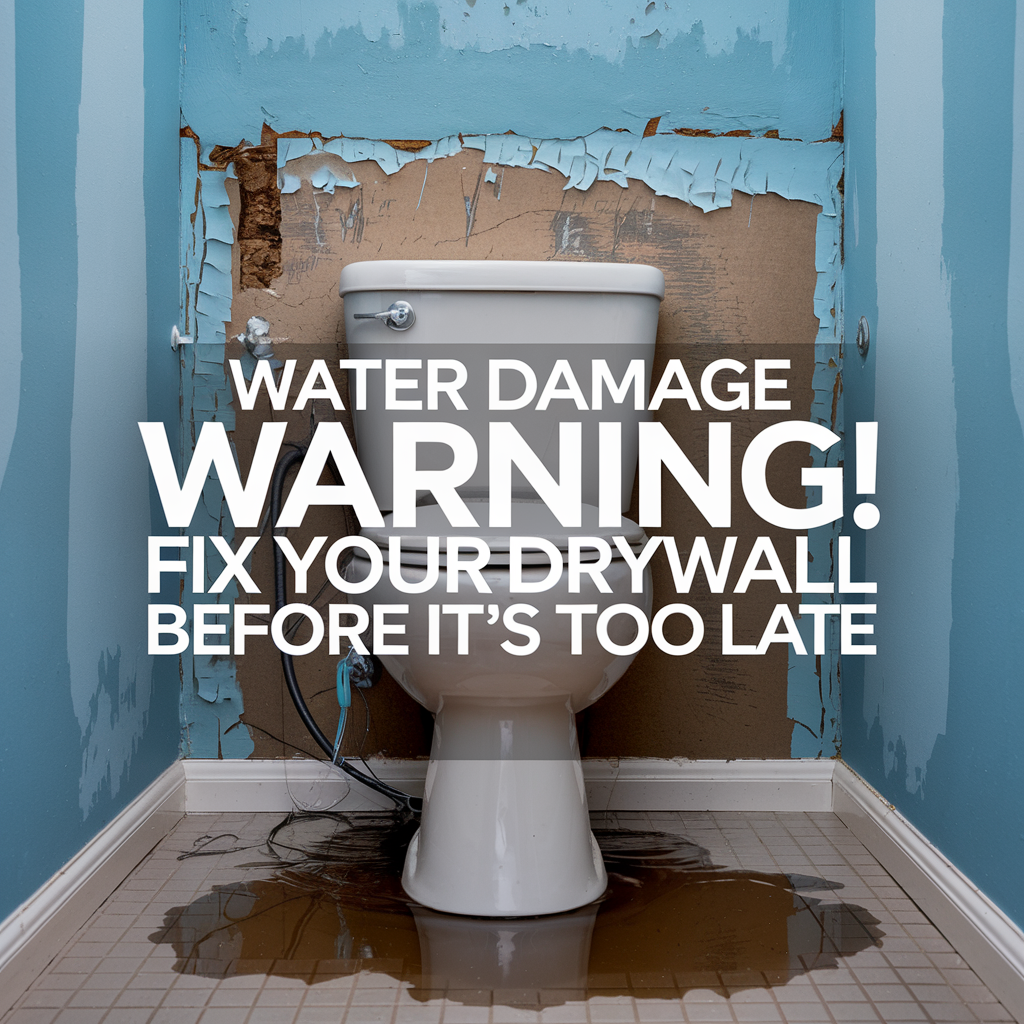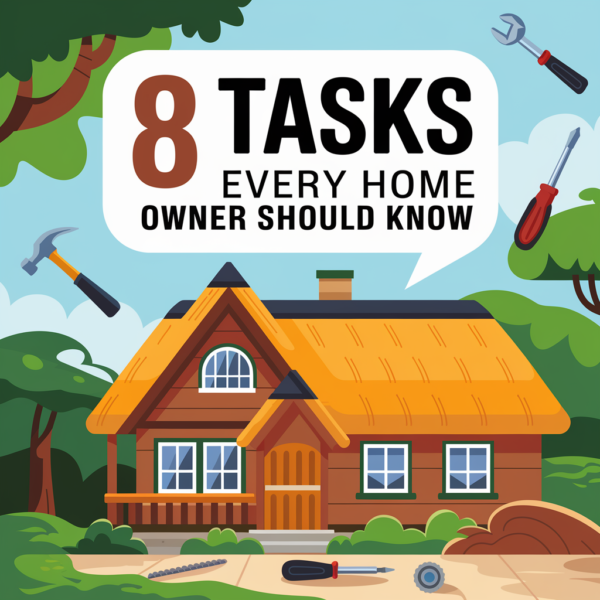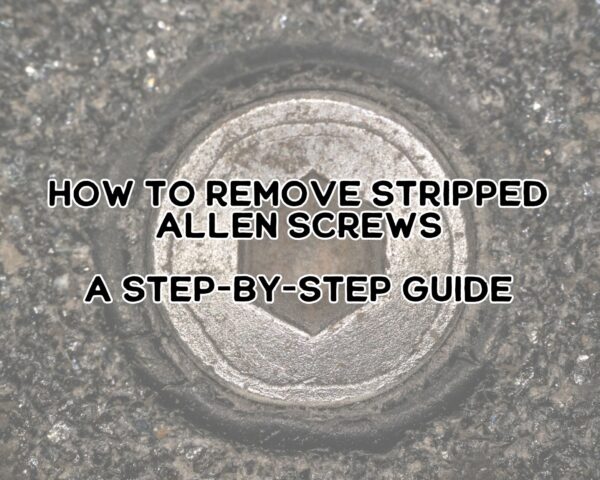
Why Does My Toilet Keep Running After Flushing?
It started with a soft trickling sound.
I figured the tank was just finishing up a flush—but 20 minutes later, it was still going.
That’s when I realized my toilet wasn’t shutting off. And if you’re here, yours probably isn’t either.
A toilet that keeps running after you flush is one of the most annoying and water-wasting problems in a house.
It usually means one thing: something in the tank isn’t working the way it should.
Here are the most common reasons your toilet keeps running:
1. The Flapper Isn’t Sealing Properly
The rubber flapper is supposed to drop and create a tight seal after you flush.
If it’s old, warped, or misaligned, water keeps slipping into the bowl—and the tank keeps refilling.
2. The Fill Valve Is Stuck or Malfunctioning
If the fill valve never shuts off, water keeps flowing into the tank.
This can happen if the valve’s worn out, clogged, or not calibrated right.
3. The Float Is Set Too High
When the float is adjusted too high, the tank fills past the overflow tube—causing water to spill into the bowl nonstop.
It’s like a leak that’s built into the design.
Most of the time, a running toilet comes down to just a couple of worn-out parts—and they’re cheap and easy to replace, even if you’ve never fixed a toilet before.
Let me walk you through what to check first.

What’s the First Thing I Should Check?
Before you start buying new parts or pulling tools out, do this:
Take the tank lid off and watch what’s going on inside.
You’d be surprised how often the problem is obvious once you look.
Here’s what I always check first when a toilet won’t stop running:
1. Look at the Flapper and Chain
If the chain is too short or caught under the flapper, it can prevent a full seal.
Sometimes it just needs untangled—or lengthened slightly so the flapper drops freely.
2. Check the Water Level
If water is flowing into the overflow tube, your float is likely too high.
You can usually fix this by turning the screw on the fill valve clockwise to lower the float height.
3. Lightly Press the Flapper
If pushing down on it stops the running sound, your flapper is worn or warped.
This is your green light to replace it—more on that in a bit.
And if you’re seeing cloudy water, rust, or grit when you look in the tank, it may be time for a bigger refresh.
That’s where a simple kit like the Korky QuietFILL toilet fill valve and premium flapper combo comes in handy.
It’s made in the USA, super quiet, and easy to install with just basic tools.
Now that you’ve got your first diagnosis, let’s get into the actual fix.

How Do I Fix a Toilet That Won’t Stop Running?
Once I knew what to look for inside the tank, fixing the issue was way easier than I expected.
Most running toilets can be fixed in under 30 minutes—and if you’ve got a screwdriver and a little patience, you’re good to go.
Here’s the step-by-step I used the first time I tackled this:
1. Turn Off the Water Supply
Look behind the toilet—there’s a small shutoff valve at the base.
Turn it clockwise until it stops. This keeps the tank from constantly refilling while you work.
2. Flush the Toilet and Empty the Tank
Hold the handle down to drain as much water as possible.
You can mop up any leftovers with a towel or sponge if you want to stay clean while replacing parts.
3. Replace the Flapper If It’s Worn
Flappers wear out. The rubber warps, cracks, or gets slime buildup.
If your flapper doesn’t seal perfectly, water leaks through—nonstop.
I replaced mine with this Korky QuietFILL valve and flapper combo and haven’t had a single issue since.
It was super easy to install, plus the tank is now way quieter after flushing.
4. Adjust or Replace the Fill Valve
If water keeps pouring in after a flush, your fill valve might be the issue.
You can try adjusting it with the screw near the float—but if it’s old, just replace it.
I used this Fluidmaster Performax fill valve once on a noisy old tank and it completely solved the problem.
Once everything’s in place, turn the water back on and give it a flush.
If the tank fills, stops, and stays quiet—you’ve fixed it!
What Is the Most Common Cause of a Running Toilet?
If I had to bet money on what’s causing your toilet to run, I’d say the flapper.
It’s the #1 reason most toilets won’t stop running, and it’s also one of the cheapest parts to fix.
Here’s what usually goes wrong:
1. Flapper Doesn’t Seal the Tank Properly
Over time, the rubber hardens, warps, or collects buildup.
Even a small gap lets water leak into the bowl, which means the tank constantly tries to refill.
You’ll often see or hear a light trickle—especially at night when everything else is quiet.
2. Fill Valve Isn’t Shutting Off
If the fill valve doesn’t detect the correct water level, it keeps refilling forever.
This is usually a float adjustment issue—or the valve is simply worn out.
I swapped mine with the Fluidmaster fill valve + adjustable flapper kit and liked it because it handled both problems at once.
No guesswork—just swap it in, adjust the float, and you’re done.
3. Chain Is Too Short or Tangled
If the chain connecting the handle to the flapper is too tight or snagged, the flapper can’t drop all the way.
Give it a little slack so it closes fully every time.
Fixing just one of these things usually stops the run—but even better, upgrading the worn-out parts gives you peace of mind long term.
(And if you’re already fixing toilet issues, you might also want to check this out: Fixing low water pressure without replacing pipes—because sometimes pressure and fill problems go hand in hand.)

How to Replace a Toilet Flapper the Right Way
I used to think replacing a toilet flapper was some plumbing-level job—but honestly, it’s one of the easiest home fixes you can do, and it’ll save you from the nonstop sound of running water.
If your flapper is old, warped, or just not sealing right, here’s how to swap it out:
Step 1: Shut Off the Water and Empty the Tank
Turn the valve behind the toilet clockwise until the water stops.
Then flush and hold the handle down to drain the tank.
Step 2: Unclip the Old Flapper
Most flappers just snap onto the pegs on the overflow tube.
Slide it off, then unhook the chain from the flush handle arm. If the rubber’s stiff or slimy, it was definitely time for a new one.
Step 3: Install the New Flapper
Hook the new flapper onto the pegs and reattach the chain.
Pro tip: Leave a little slack in the chain so the flapper can close fully without pulling.
I personally used the Korky QuietFILL fill valve + flapper combo and was impressed at how smooth and quiet it made the whole flush.
It’s made in the USA and designed to prevent those annoying slow leaks that never fully stop.
Step 4: Turn the Water Back On and Test It
Refill the tank, flush it, and watch it seal.
If the water fills to the correct level and stops—you nailed it.
This is the part I always recommend doing before replacing a whole fill valve, because a bad flapper is the simplest, cheapest fix to rule out.

Is a Running Toilet Costing Me Money?
Oh yeah—a lot more than you’d think.
When my toilet started running nonstop, I ignored it for a few days. Then I got the next water bill.
It was nearly double. That’s when I realized a tiny leak adds up fast.
Here’s how it breaks down:
- A slow-running toilet can waste up to 200 gallons per day
- That’s over 6,000 gallons a month
- Even if your city charges a low rate, you’re talking $30–$70 extra per month
It’s basically like leaving your garden hose running all day, every day.
And beyond the bill, all that water is flowing into your septic or sewer system, which can create other problems down the line.
If you’ve got a second bathroom that doesn’t get much use, don’t assume it’s fine just because no one’s flushing it.
Go lift the lid and see if it’s silently draining dollars.
Trust me, replacing a flapper or valve with something like this Fluidmaster fill valve + flapper kit will pay for itself on your next water bill.
And if you’re just moving into a place or keeping up with regular upkeep, this belongs on your checklist of essential home maintenance tips too.
When Should I Replace the Fill Valve Too?
If you’ve already replaced the flapper and the toilet still keeps running or filling weird, your next suspect is the fill valve.
I used to overlook this part, but it’s just as common to fail—especially in older toilets or those that make a lot of noise after flushing.
Here’s how I knew it was time to swap mine out:
1. Tank Was Filling Way Too Slowly
The water would trickle in and take forever to reach the fill line.
That’s usually the valve wearing out or getting clogged inside.
2. Float Adjustments Stopped Working
If you try to lower the water level but nothing changes, the float arm or valve mechanism might be jammed up or broken.
3. Toilet Makes That “Hissing” Sound After Flushing
Mine would hiss for 10–15 minutes after a flush—especially at night when everything else was quiet.
That’s a sure sign the fill valve isn’t sealing off properly.
I ended up replacing mine with the Fluidmaster Performax fill valve and it instantly solved every issue.
It’s adjustable, easy to install, and made my whole tank sound quieter and smoother.
If you need a full refresh—especially if your flapper’s also shot—I’d go with this combo kit from Fluidmaster that includes both the fill valve and a new adjustable flapper.
And just like that, my toilet was back to normal. No more guessing. No more wasted water.

What If Water Is Dripping Into the Bowl All the Time?
If you look into the bowl and see ripples or dripping even though no one just flushed—it means water’s leaking through.
It’s subtle, but it adds up fast.
Here’s how I narrowed it down:
1. The Flapper Wasn’t Fully Sealing
Even brand-new flappers can be installed slightly crooked or with too much chain tension.
That tiny gap can cause a steady leak into the bowl.
2. Overflow Tube Was Too High
If the float is set too high and the water level hits the top of the overflow tube, it constantly drains into the bowl—creating a silent leak that’s easy to miss.
3. Flush Valve Seat Was Dirty or Warped
Sometimes gunk or mineral buildup keeps the flapper from sealing completely.
I cleaned mine with a soft cloth and white vinegar and it helped temporarily—until I replaced the entire flush mechanism.
This type of leak is easy to overlook, especially if the sound blends into the background.
But trust me, once you fix it, you’ll be shocked at how quiet your bathroom becomes.
And if that leak gets worse and ends up dripping onto your floor or soaking drywall behind the tank, here’s how to repair water-damaged drywall and prevent future issues before it turns into a weekend-long nightmare.

Can a Running Toilet Cause Water Damage?
You wouldn’t think so, right? It’s just water trickling into the bowl.
But let me tell you—if something goes wrong beyond that simple leak, it can lead to a bigger mess than you bargained for.
Here’s how I’ve seen a running toilet cause actual water damage:
1. Overflow From a Faulty Fill Valve
One time, the float in my tank completely failed while I was out of town.
The valve never shut off. The tank kept filling and eventually overflowed, soaking the bathroom floor for hours.
Warped baseboards, soft drywall, and a musty smell for days.
2. Constant Condensation + Minor Leaks
Even when it’s not overflowing, all that cold water refilling constantly causes condensation on the outside of the tank.
That moisture drips down and pools behind the toilet, especially if your bathroom’s not well ventilated.
Left unchecked, that can rot flooring or damage the wall behind the tank.
3. Slow Leaks Can Go Undetected for Weeks
If you’ve got a guest bathroom or downstairs half-bath that doesn’t get much attention, a small leak can become a big deal.
By the time you notice peeling paint or warped trim, the damage is done.
If that’s already happened to you, here’s how to repair water-damaged drywall the right way before the mold takes over.
Moral of the story: don’t ignore a running toilet. It’s not just annoying—it’s a sneaky home maintenance hazard.

How to Stop a Toilet From Running Without a Plumber
I used to think a running toilet meant I’d be calling in a pro or shelling out for some full toilet replacement kit.
But after fixing a few myself, I realized just how DIY-friendly this repair really is.
Let’s recap what works:
- Start with the flapper. It’s almost always the first to fail.
- Adjust the float. Make sure the tank isn’t filling past the overflow tube.
- Replace the fill valve if the water won’t shut off, or if the tank takes forever to fill.
- Use trusted replacement kits like this Korky QuietFILL kit or this Fluidmaster valve + flapper combo to get it done fast and right.
And if you’re not sure where to begin, check out this guide for DIY plumbing repairs every homeowner should know.
It’s saved me more than once.
If your toilet keeps running after flushing, don’t overthink it.
You’ve now got everything you need to fix it yourself—no plumber, no stress, no wasted water.
As an Amazon Associate we earn from qualifying purchases through some links in our articles.



